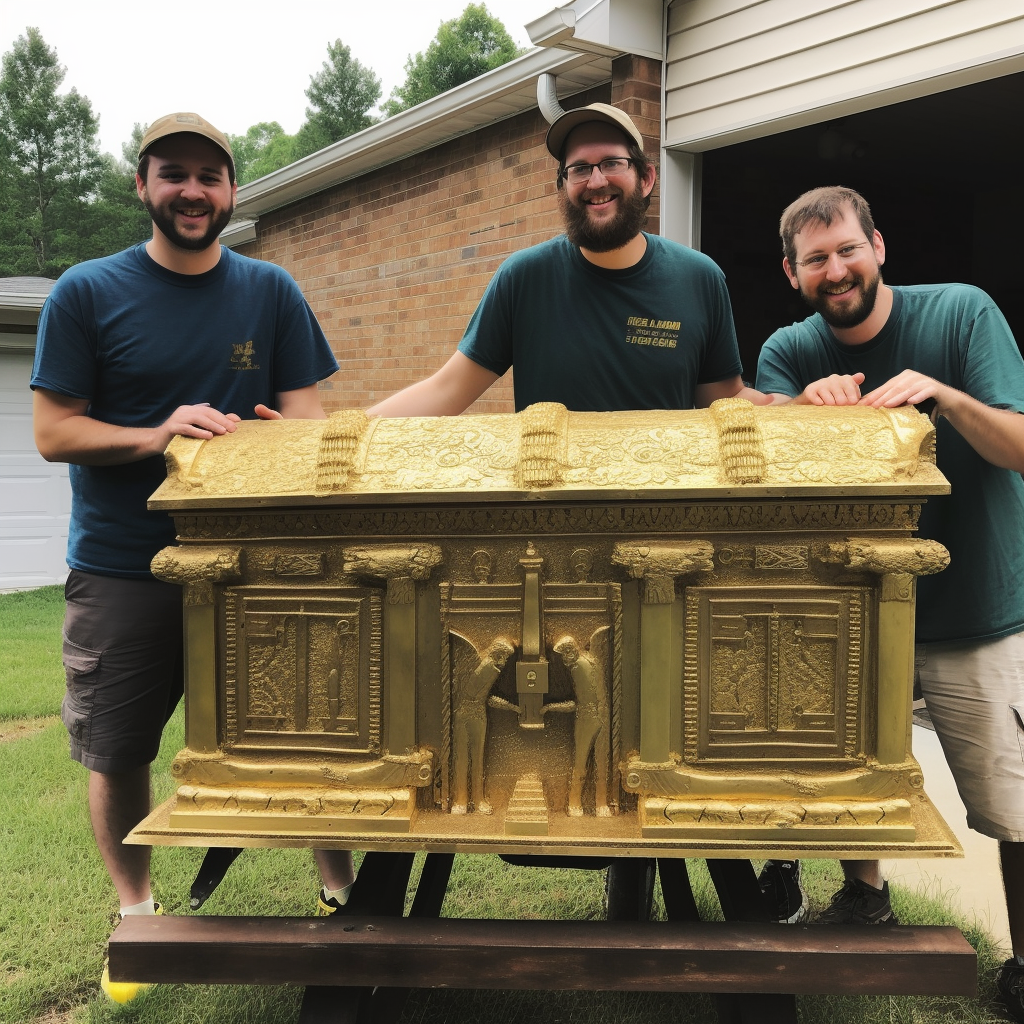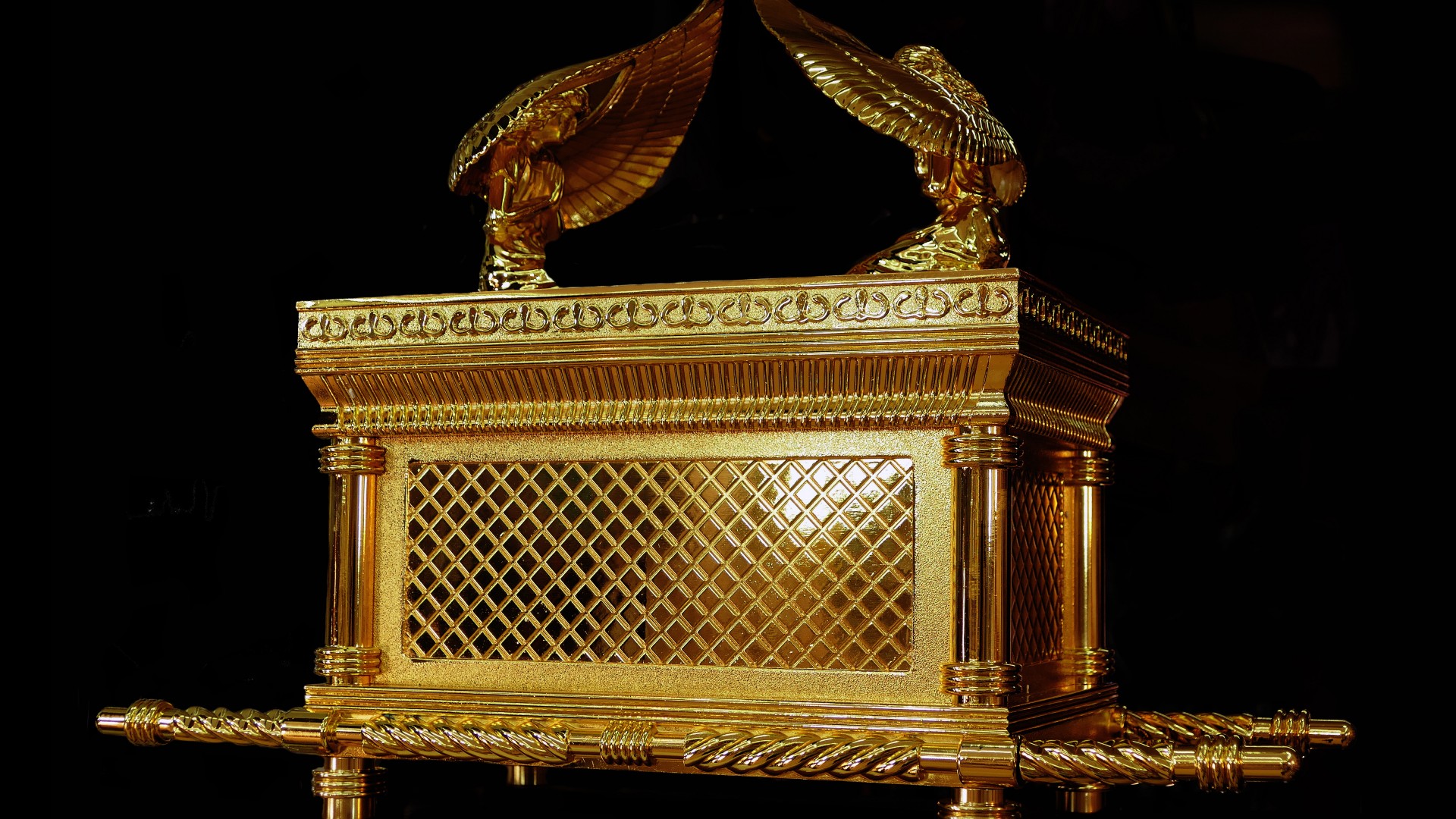
Introduction
In the realm of sacred artifacts, the Ark of the Covenant stands as an enigma, a vessel shrouded in mystery and revered for its profound religious significance. For centuries, the Ark has captivated the imaginations of historians, theologians, and adventurers alike, its whereabouts remaining an unsolved puzzle that continues to fuel speculation and intrigue. Embark on a journey to uncover the fascinating story of the Ark of the Covenant, exploring its historical context, religious symbolism, and the enduring fascination it holds in popular culture.
A Sacred Chest: Unveiling the Construction of the Ark of the Covenant
The Ark of the Covenant was meticulously crafted according to the divine instructions bestowed upon Moses atop Mount Sinai. Its construction embodied sacred principles and symbolism, reflecting the Israelites’ deep reverence for their God.
-
-
Materials: Acacia wood, a symbol of strength and durability, formed the Ark’s core, while a lavish overlay of gold adorned its exterior, signifying divine glory and opulence.
-
Dimensions: The Ark’s dimensions were carefully prescribed, measuring two and a half cubits in length, one and a half cubits in width, and one and a half cubits in height (approximately 4 feet long, 2 feet wide, and 2 feet high).
-
Design: The Ark’s design exuded both grandeur and practicality. Four gold carrying rings were affixed to its sides, allowing for transportation, while two gold-plated acacia wood poles, inserted into the rings, served as carrying handles.

-
Sacred Contents: Unveiling the Treasures Held within the Ark
The Ark of the Covenant served as a repository of sacred objects, each imbued with profound religious significance:
-
-
The Ten Commandments: Engraved on tablets of stone, the Ten Commandments represented the divine laws that guided the Israelites’ moral and spiritual conduct.
-
The Rod of Aaron: This staff, once wielded by Aaron, Moses’ brother, symbolized his authority as a high priest and his ability to perform miracles.
-
The Pot of Manna: This vessel held the miraculous food that sustained the Israelites during their arduous journey through the wilderness, a testament to God’s provision and care for his people.
-
A Journey through Time: Unveiling the Ark’s Enduring Presence
The Ark of the Covenant embarked on a remarkable journey through the annals of Israelite history, its presence marking pivotal moments:
-
From Sinai to the Tabernacle: The Ark accompanied the Israelites from Mount Sinai to the Tabernacle, a portable sanctuary that served as their place of worship during their wanderings in the wilderness.
-
Captured and Returned: The Ark fell into the hands of the Philistines during a battle, but after seven months of divine plagues, they were compelled to return it to the Israelites, acknowledging the power of the God it represented.
-
Solomon’s Temple: The Ark found its ultimate resting place in Solomon’s magnificent Temple in Jerusalem, a symbol of God’s presence and covenant with his people.
-
Fate after Destruction: The Ark’s whereabouts remain a mystery following the destruction of Solomon’s Temple by the Babylonians in the 6th century BC. Numerous theories have been proposed regarding its fate, adding to its enigmatic allure.

Theories and Speculations: Unveiling the Ark’s Unknown Destiny
The Ark’s disappearance from the historical record has fueled countless theories and speculations, each seeking to unravel the mystery of its whereabouts:
-
Ethiopian Hypothesis: This theory suggests that the Ark was taken by the Ethiopian king Menelik I, where it remains hidden in the Church of Our Lady Mary of Zion in Axum, Ethiopia.
-
Dead Sea Scrolls Hypothesis: Some believe that clues to the Ark’s location may be found within the Dead Sea Scrolls, ancient Jewish texts discovered in 1947.
-
Modern Culture References: The Ark continues to captivate popular culture, appearing in various works of fiction, films, and conspiracy theories, further cementing its status as an enduring enigma.
Symbolism and Significance: Unveiling the Ark’s Profound Meaning
The Ark of the Covenant transcended its physical form, embodying profound symbolism and religious significance:
-
God’s Presence: The Ark served as a tangible representation of God’s presence among his people, a symbol of their covenant with him.
-
Divine Power: The Ark was believed to possess immense divine power, capable of miracles and striking fear into the hearts of its enemies.
-
Source of Protection: The Ark was seen as a source of protection and guidance for the Israelites, a reminder of God’s unwavering support and care.
-
Unearthing the Evidence: Unveiling the Search for the Ark
Despite the enduring fascination with the Ark of the Covenant, concrete archaeological evidence for its existence remains elusive. However, various avenues of exploration continue to shed light on this enigmatic object:
-
Limited Archaeological Finds: While no definitive archaeological evidence directly points to the Ark’s location, some scholars propose that ancient artifacts, such as depictions of the Ark on temple walls or references in recovered texts, may offer clues for further investigation.
-
Ongoing Archaeological Research: Archaeological research in Jerusalem and other potential locations continues, with advancements in technology and new discoveries potentially aiding in the quest to locate the Ark. However, the lack of concrete evidence necessitates a cautious approach, separating historical possibilities from pure speculation.

A Legacy of Fascination: Unveiling the Ark’s Presence in Popular Culture
The Ark of the Covenant’s enduring allure extends beyond the realm of history and religion, captivating the imaginations of artists, writers, and filmmakers:
-
Art and Literature: The Ark has been depicted in numerous works of art throughout history, appearing in paintings, sculptures, and religious iconography. Literary works, from ancient texts to modern fiction, have also explored the Ark’s symbolism and potential location.
-
Films and Television: The Ark continues to be a popular subject in films and television shows, often portrayed as a powerful and dangerous artifact. These depictions, while entertaining, often take liberties with historical accuracy, further blurring the lines between fact and fiction.
-
Urban Legends and Conspiracy Theories: The Ark of the Covenant has become a fixture in urban legends and conspiracy theories, often associated with supernatural powers or hidden locations. While these theories lack any substantial evidence, they highlight the enduring public fascination with the Ark’s mystery.

Conclusion: Unveiling the Enduring Enigma
The Ark of the Covenant remains an enigma, a sacred object that continues to spark debate and ignite the imaginations of historians, theologians, and adventurers alike. Its historical significance, religious symbolism, and enduring presence in popular culture solidify its place as one of the most captivating artifacts in human history. While the search for its physical location continues, the Ark’s enduring legacy lies in its ability to inspire awe, wonder, and a profound sense of mystery.
Additional Resources:
-
Explore academic journals and articles that delve deeper into the historical and archaeological evidence surrounding the Ark of the Covenant.
-
Discover documentaries and television programs that explore the various theories and ongoing searches for the Ark.
-
Visit museums and archaeological sites that house artifacts related to the Israelites and the Temple in Jerusalem, potentially offering insights into the Ark’s context.
-

